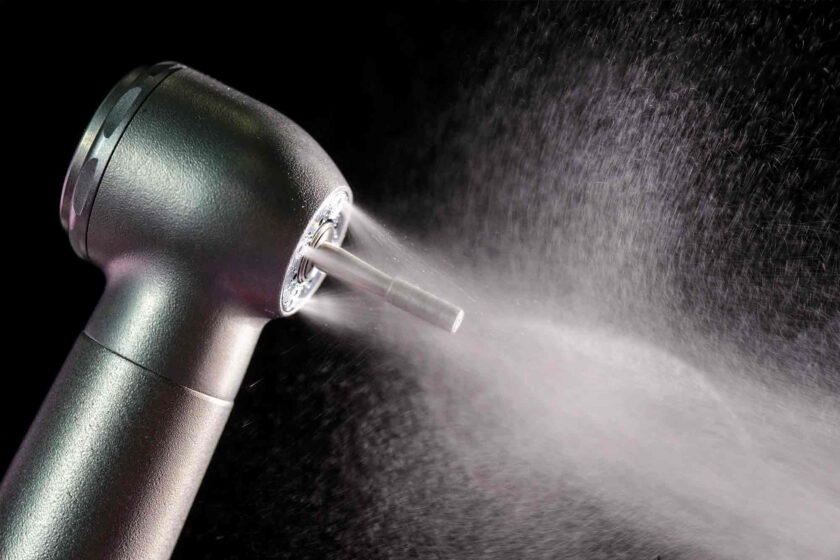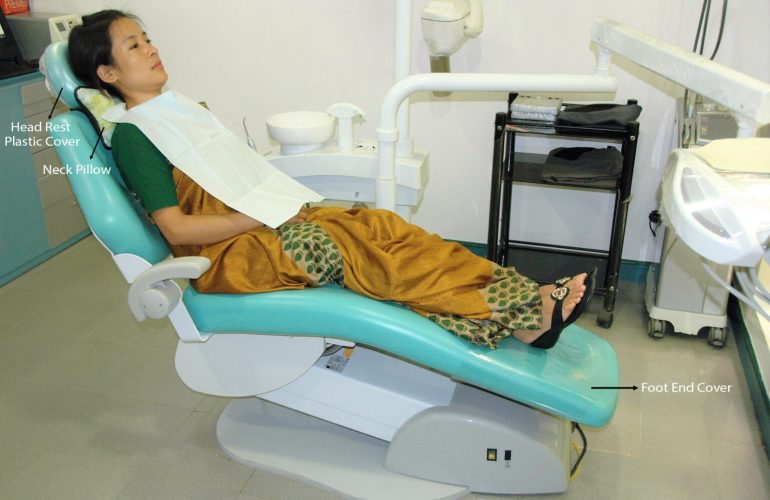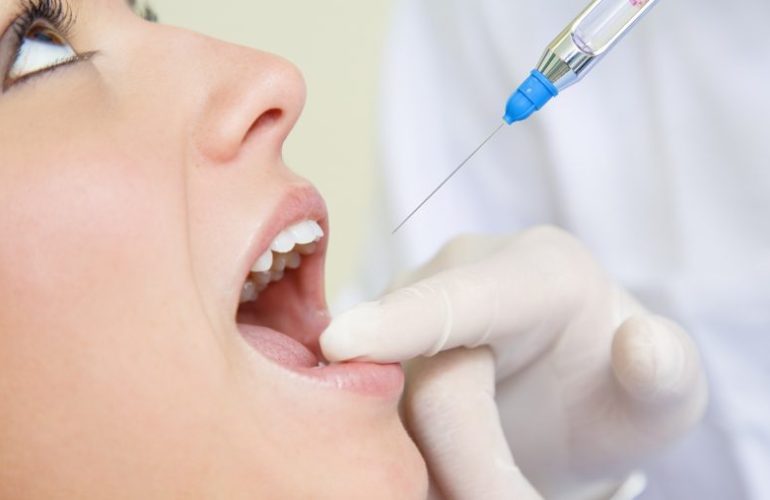Now you see it, now you don’t. And it does not come from your favorite perfume. That fine mist that surrounds all of us as we work, day after day in our practices. Aerosols.
These are a suspension of fine solid particles or liquid droplets in air or another gas. They may be natural such as fog or mist or anthropogenic which are particulate air pollutants.
In dentistry, aerosols are everywhere. They are produced from handpieces, three-way syringes and other high-speed instruments. An aerosol cloud of particulate matter and fluid is often clearly visible during dental procedures such as scaling, tooth preparation and polishing. It is important to realize that these aerosols are contaminated with bacteria and blood from the treatment site. These represent a potential source for disease transmission.
The smaller particles of an aerosol have the potential to penetrate and lodge in the lungs and are thought to carry the greatest potential for transmitting infections. Splatter is defined as particles larger than 50microns in diameter. These are airborne only briefly until they contact a surface or fall to the ground. It is the particles less than 50 microns that can stay airborne and enter respiratory passages. Saliva is contaminated with bacteria and viruses. Our focus on aerosols have been sharpened due to the pandemic.
During a procedure, we are covered by aerosol mist on the face, hands and clothes most of the time as well as on two thirds of the mask we wear.
We need to use effective respiratory protection to help combat against infectious diseases such as Influenza, Measles, Corona Virus and its variants to name a few.
The CDC guidelines of May 2021 that states that fully vaccinated people no longer need to wear a mask does not apply to our line of work in health care.
One virus is apparently receding while the Omicron is gaining ground as it is very infectious. All mutant forms are potentially capable of disrupting normal life in so many ways. It is necessary not to let our guard down. The same infection control methods need to be adhered to as well as ventilation in operatories, limiting and spacing patients and placement.
Masks continue to be our best defense. They are measured based on their performance matrix such as
- Particle Filter Efficiency
- Bacterial Filter Efficiency
- Fluid Resistance
- Breathability -The measure of the mask’s resistance to airflow.
- Inflammability.
For dentists, Fluid Resistance is of the most importance.
The mask types that we are familiar with are as follows:
1. Face Mask: Used by the general public not meant for medical purposes.
2. Procedure Masks: These have loops instead of ties and are used in many practices.
3. Surgical Masks: These are loose-fitting masks that cover the nose and mouth to provide a physical barrier to particulate materials and fluids. They have ties to enable a tighter closer fit and are worn over surgical hair coverings. They are considered medical devices with a filtration rate of around 80%. They are designed to protect only in one direction that is, from inside out. These do not ensure a good hermetic seal and allow particles to enter around the edges.
4. Respirators: Also called FFRs (Face Filtering Respirators) are classified according to their filtering facepiece (FFP). These could be FFP1, FFP2, and FFP3 with a particle filtration capacity of .3 microns of 80%, 95%, and 99% respectively.
Respiratory masks provide protection in two directions. They can filter both incoming and outgoing air and are resistant to liquid spray or blood splatter. These masks allow adjustments to provide a hermetic seal on contact with the skin.
In conclusion we need to use medical grade N95 respirators without valves.
The use of N95 or FFP2 respirators is part of PPE for dental use during patient care. For a longer useful life for Respirators an outer surgical mask is added. Masks were there and in use by dentists long before the pandemic. They will continue to be there long after.
They are a way of life, a protection, and a true friend of the dentist indeed!




